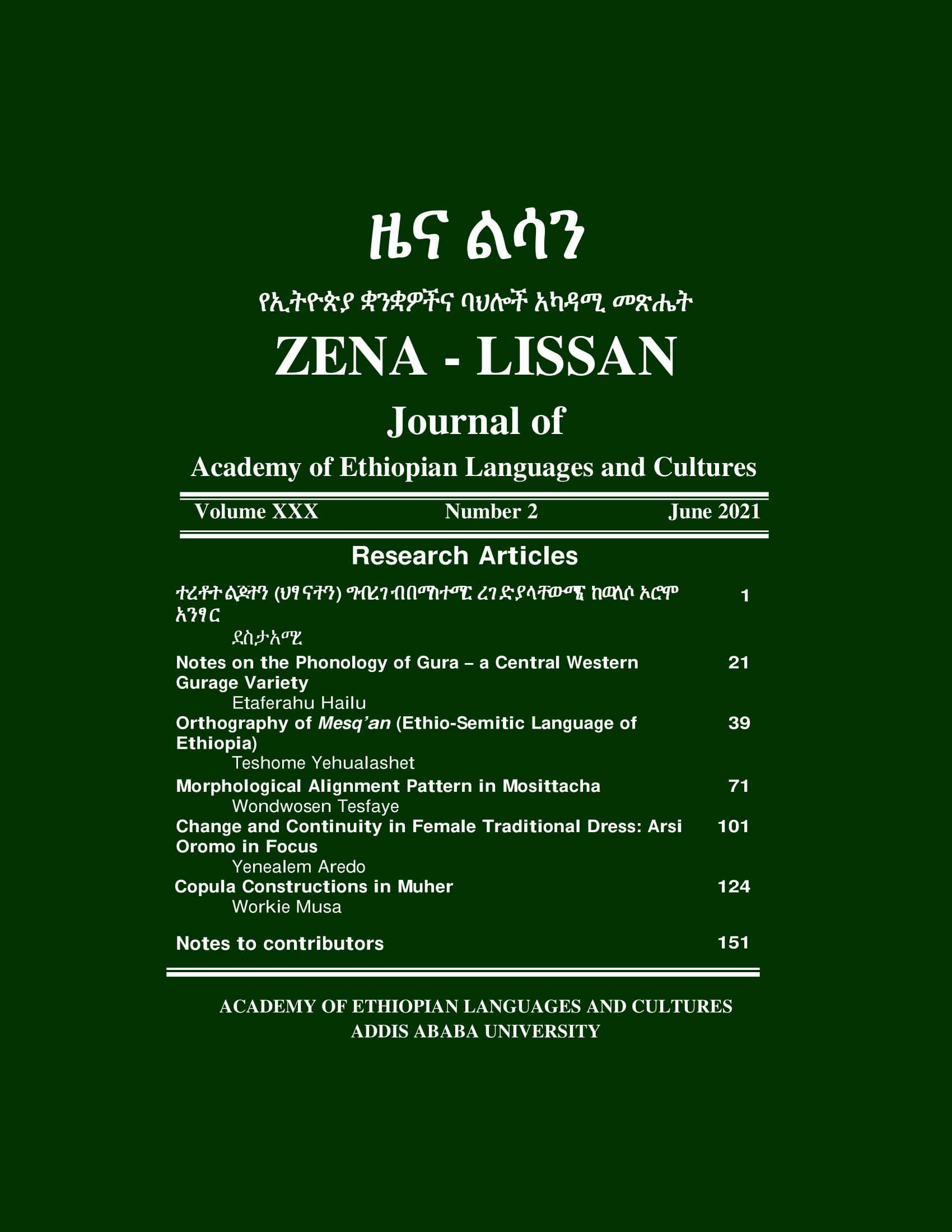Change and Continuity in Female Traditional Dress: Arsi Oromo in Focus
Abstract
Abstract
This article focused on the aspects of change and continuity particularly on types of traditional female dress of Arsi Oromo. Methodologically, the study followed qualitative approach. Consultants were selected using purposive sampling techniques. Data were collected from Kokkoosa and Gadab Hasaasa districts of West Arsi Zone with observation and interview methods. Consequently, Structural functionalism and contextual approaches were employed for the identification of continuity and change in female traditional dress. The analysis revealed that dress types such as qolo, boke, bonko, qexxaa and harsama are common in both districts; however, the similarity is mostly limited to their names. Qolo is found in both districts but its structure (style) is limited to shirt. On the other hand, qexxaa unlike its function as a symbol for newly married woman in kokkoosa, it is worn by girls and woman in GadabHasaasa. Accordingly, reasons for the change are personal interest, formal education and the limited availability of raw materials. Therefore, it is recommended that, concerned bodies shall create awareness among dress makers and wearers about the cultural significance of traditional dress, before the cultural meanings embedded are isolated from the traditional dress.
Key Terms: [traditional dress, change and continuity, Arsi Oromo]
